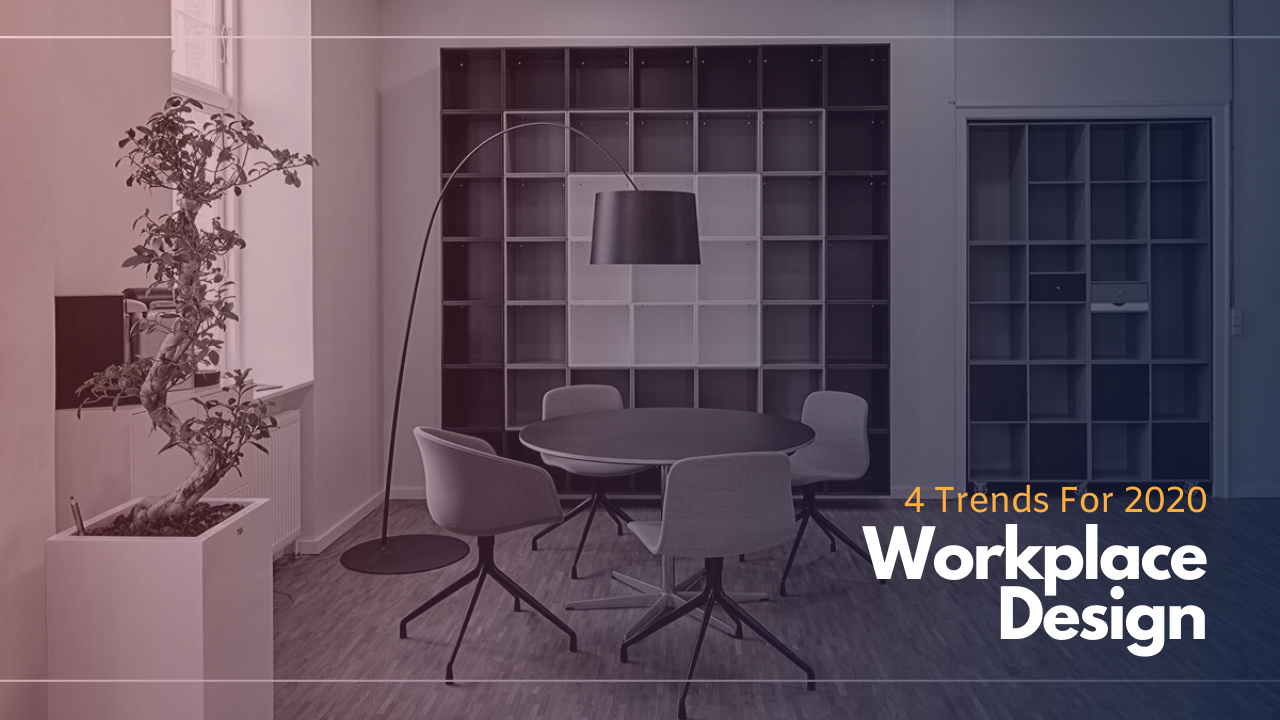- A new report analyzes macro and micro design trends that will dominate the workplace in 2020.
- Workspaces are becoming more dynamic, authentic, sustainable, and hospitable than ever before.
- Flexible elements, wooden textures, home-styled features, and sustainability are all expected to dominate workspace design in 2020.
2019 is coming to an end and companies are preparing to welcome 2020 in the workplace. Ambius, an interior landscape company, recently published its report 2020 Office Design Trends. The report analyzes macro and micro design trends that will dominate the workplace next year.
The goal of design is to improve the built environment for the end user, taking into account the ever changing and ever-expanding needs of businesses. As worker needs and demands change and as technology continues to revolutionize the world of work, the physical space must change as well.
One of the key ways the workplace has changed recently is that it is no longer just a place where people go to work. “Offices are a brand statement, and a true reflection of the businesses’ core values, cultural identity, and vision.” Because of this change in the role of the workplace, “properties are being developed and reimagined as more dynamic, authentic, sustainable, and hospitable than ever before.”
Ambius identified 8 emerging workplace design themes that will come to the fore in 2020:
- Sustainability
- Wellness & well-being
- Hospitality-inspired
- Dynamic & functional
- Creative & inspiring
- Authentic & personal
- Color saturation
- Collaboration & community
4 Macro Workplace Design Trends to Look Out For
Macro trends are trends that will influence a property’s architecture, engineering, and design on a large scale. Ambius identified 4 macro trends that will play a key role in workplace design this coming year.
1. Dynamic Flexibility
Dynamic flexibility will be a property’s ability to shift and reshape itself in the blink of an eye in order to meet worker needs. The goal of dynamic flexibility is to create multi-functioning workplaces that can transform themselves from a meeting room to a production studio or a private office.
To create this type of environment, companies need to embrace a furniture-forward thinking approach. Furniture and workplace elements should be lightweight and easily movable (i.e. have wheels); and they should also be ergonomic and multi-functional.
Examples of multi-functional furniture includes a desk that doubles as a presentation board, a large table that can be easily converted into a small table with two chairs, and a wall or partition that can double as a whiteboard.
2. Wooden Textures
Wood is officially back, and for good reason.
“As businesses become more focused on sustainability and hone their brand messages to attract top talent, facilities have adopted a more environmentally conscious attitude to meet their employee and tenant expectations.” (There’s also a well-being element that plays into this, but more on that later.)
Designers and property developers are increasingly incorporating sustainably sourced, recycled, and reclaimed wood into the interiors of a building. Wood can give the built environment a more authentic and organic feel.
Key features of this trend include linear, slatted wood; warm and textured wood; structural and wall construction using wood; natural accent details; and biomorphic forms and patterns.
Suggested Reading: “Nature and the Workspace Wellness Movement: A Q&A with Philip Vanhoutte”
Some easy ways to incorporate wood elements in the workplace include: wooden desks and tables, wooden benches (particularly for the kitchen and dining areas), wooden shelves, wooden pallets for lounge areas, wooden partitions, and wood inspired decorations and accent pieces.
3. Community in a Remote World
As more employees demand the ability to work remotely, companies are faced with the challenge of getting them in the office. To achieve this, designers need to create more inviting, comfortable, and inspiring spaces that will encourage employees to want to come into the office.
“The community trend takes a lot of its design inspiration from business-focused hotel brands; offering features such as restaurants, bars, fireplaces, comfortable furniture, game rooms, and more.”
Part of the reason why going into the office is key to company success is that, when designed correctly, the workplace can positively contribute to company culture and foster a feeling of company identity among employees.
Key features that need to be taken into consideration for this macro trend includes collaborative environments, warm and welcoming environments, indoor-outdoor blurred transitions, soft and plush elements, and home-styled fixtures.
To create a sense of community in the workplace, designers should create work areas that are comfortable and casual (think sofas, lounge chairs, brainstorming areas, etc.), that are inviting, such as warm lighting and soft textures in the reception area, greenery, and warm colors.
4. Striking Sustainability
The root of this macro trend is “the combination of sustainable design and wellness design.”
“These two design applications work closely together to create spaces that integrate sustainably sourced and “green” building materials into a space while emphasizing human-centric design.”
Suggested Reading: “14 Patterns of Biophilic Design to Improve Health and Wellbeing in the Workplace”
Workplaces in 2020 will increasingly focus on the end-user, and incorporating biophilic design into the workplace can improve productivity and help battle stress. “Ultimately, the goal is to establish a more harmonious relationship between nature, our buildings, and ourselves.”
Key elements of this macro trend include the use of minimally processed materials, use of natural wood and stone features; green spaces; and access to natural lighting.
Suggested Reading: “11 Tricks to Maximize Natural Light in the Workplace”


 Dr. Gleb Tsipursky – The Office Whisperer
Dr. Gleb Tsipursky – The Office Whisperer Nirit Cohen – WorkFutures
Nirit Cohen – WorkFutures Angela Howard – Culture Expert
Angela Howard – Culture Expert Drew Jones – Design & Innovation
Drew Jones – Design & Innovation Jonathan Price – CRE & Flex Expert
Jonathan Price – CRE & Flex Expert













